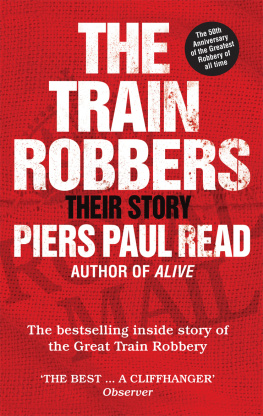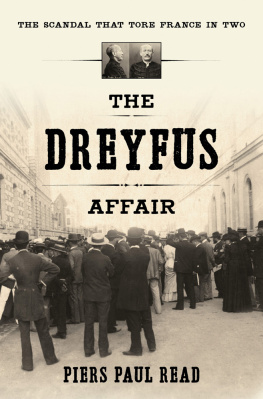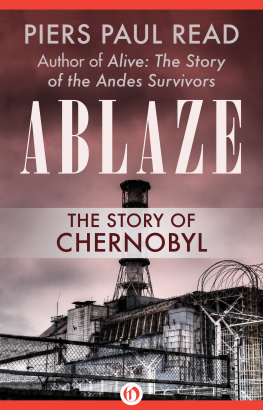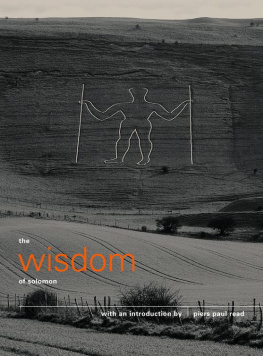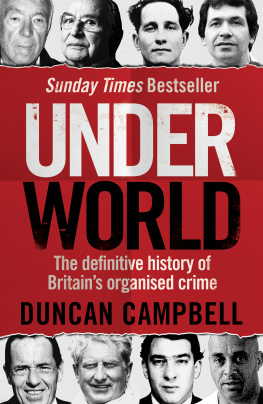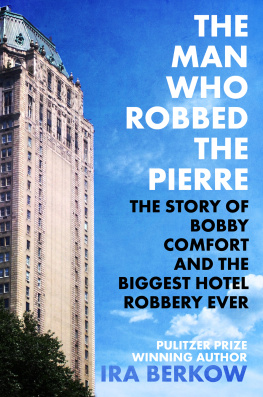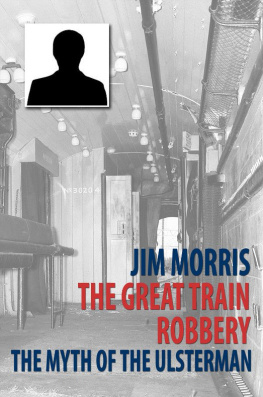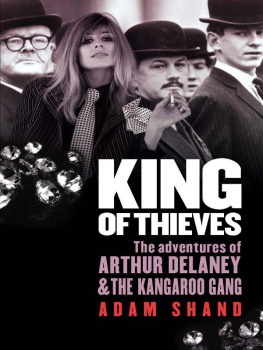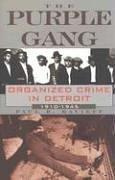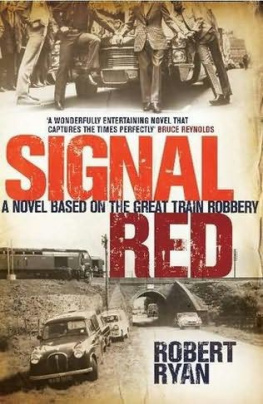Contents
About the Book
On Thursday August 8 1963, fifteen masked men stopped the night train from Glasgow to London robbing it of its cargo of 2.6 million in unmarked notes. Dubbed the Crime of the Century, the thieves were pursued by Scotland Yard until half of the gang were behind bars, serving huge prison terms. But the story didnt end there. First one, then another escaped in thrilling style and fled abroad. The story caught the worlds imagination and the train robbers became folk heroes.
Years later, the gang came back together to share their story with Piers Paul Read, bestselling author of Alive. This is their classic account of the audacious crime, and its even more sensational aftermath.
About the Author
Piers Paul Read, the son of poet and art critic Sir Herbert Read, was born in 1941 and educated at Ampleforth and Cambridge. He has published many novels and works of non-fiction and is the winner of numerous literary prizes, among them the Thomas More medal for distinguished contribution to Catholic literature for his book Alive. Reid is married with two sons and two daughters and lives in London.
THE TRAIN ROBBERS
THEIR STORY
PIERS PAUL READ
The original inside story of the Great Train Robbery

This ebook is copyright material and must not be copied, reproduced, transferred, distributed, leased, licensed or publicly performed or used in any way except as specifically permitted in writing by the publishers, as allowed under the terms and conditions under which it was purchased or as strictly permitted by applicable copyright law. Any unauthorized distribution or use of this text may be a direct infringement of the authors and publishers rights and those responsible may be liable in law accordingly.
Version 1.0
Epub ISBN 9780753550090
www.randomhouse.co.uk
2 4 6 8 10 9 7 5 3 1
First published in 1978 by WH Allen
This edition published in 2013 by Virgin Books, an imprint of Ebury Publishing
A Random House Group Company
Copyright Piers Paul Read 1978
Piers Paul Read has asserted his right under the Copyright, Designs and Patents Act 1988 to be identified as the author of this work.
Every reasonable effort has been made to contact copyright holders of material reproduced in this book. If any have inadvertently been overlooked, the publishers would be glad to hear from them and make good in future editions any errors or omissions brought to their attention.
All rights reserved. No part of this publication may be reproduced, stored in a retrieval system, or transmitted in any form or by any means, electronic, mechanical, photocopying, recording or otherwise, without the prior permission of the copyright owner.
Addresses for companies within The Random House Group Limited can be found at www.randomhouse.co.uk/offices.htm
The Random House Group Limited Reg. No. 954009
A CIP catalogue record for this book is available from the British Library
Maps by the Robert Clarke Studio
ISBN: 9780753541760
To buy books by your favourite authors and register for offers, visit:
www.randomhouse.co.uk
Principal Characters
and Their Associates
| Characters | Wives/Girlfriends | Associates |
| The First Firm |
| BUSTER EDWARDS | June | Derek Glass |
| Gus Brown |
| Bernie Carton |
| BILL JENNINGS |
| GORDON GOODY | Pat |
| CHARLIE WILSON | Pat | Joey Gray |
| ROY JAMES | Micky Ball |
| BRUCE REYNOLDS | Franny | Harry Booth |
| JOHN DALY | Barbara (Frannys sister) | Mary Manson |
| JIMMY WHITE | Sheree |
| ALF THOMAS |
| RONNIE BIGGS | Charmian | Stan Agate |
| JIMMY HUSSEY | Gill |
| The Second Firm |
| TOMMY WISBEY | Rene |
| FRANK MUNROE |
| ROGER CORDREY | Bill Boal |
| BOB WELCH | Pat/Jean |
The Information
Brian Field
Mark
The Ulsterman
Lennie Field
John Wheater
The Germans
Horst
Karl
Sigi
Klaus
Hannie Schmidt
Annaliese von Lutzeberg
Otto Skorzeny
The Police
Detective Superintendent Malcolm Fewtrell, head of Buckinghamshire CID
Commander George Hatherill, head of CID at Scotland Yard
Detective Superintendant Gerald McArthur
Detective Sergeant Jack Pritchard
Detective Chief Superintendent Tommy Butler, head of the Flying Squad
Detective Superintendent Frank Williams, his deputy
Detective Superintendent Maurice Ray, second in command of Dept C3 (Fingerprint Department)
Dr Ian Holden, Metropolitan Police Forensic Science Laboratory
(Train Robbers are in capital letters, invented names are in italics)
Introduction
OTTO SKORZENY
Towards the end of April 1976, a tall well-dressed South African walked into the offices of the London publishers W. H. Allen and Co., and offered to sell them the confessions of the celebrated Great Train Robbers. Thirteen years before they had stopped an overnight mail train from Glasgow to London and robbed it of more than 2,500,000 the equivalent today of 8,800,000. Those who were initially caught and convicted had been sentenced to thirty years imprisonment: two were still in jail, and one remained a fugitive in Brazil; but seven of the thieves had been released on parole and were prepared to tell their full story for the first time.
Reluctant to sign up the thieves without an author to write their story, the publishers invited me to come to London and discuss the project with all concerned. A lunch was arranged in the penthouse flat on the top floor of their offices, and it was here that I was introduced to the seven Train Robbers. At first there was little to be made of them: some were tall, some were small and most were of an indeterminate middle-age. I moved around the room, talking to one and then another. I identified Gordon Goody, the mysterious hero of Peta Fordhams book on the Train Robbery, who had a huge body and straggly hair, and sat on the black leather sofa studying us from behind dark glasses; then Roy James, the racing driver, who was small with a plaintive expression on his face. Buster Edwards and Jimmy White both brought back feeble memories of wanted posters from the early 1960s: Buster Edwards was small but upright with dark features and a pigeon chest; Jimmy White was older than the rest his head balding, his eyes and voice slow and tired. Tommy Wisbey looked like a boxer; Roger Cordrey was conspicuous only in the anonymity of his appearance. Jim Hussey was huge and looked more like a thief than the others, but the only one to strike me as slightly sinister turned out to be their South African agent, Gary van Dyk.
This first meeting was intended to enable the author to meet his subjects and the subjects to meet their author; and towards the end of lunch, as we were drinking coffee, Gary van Dyk and Buster Edwards took their leave for another more urgent appointment. I was left with the rest who a little later also departed. The lunch was over and I was taken down in the lift to the offices of W. H. Allen, where the publishers asked me whether I felt inclined to write the book.
I was undecided. Other books had been written on the Great Train Robbery and I wondered whether there was enough that was new to justify another one. I also doubted that the Train Robbers would be sufficiently candid to enable me to depict them as convincing characters, and whether they would remember details of what had happened so long ago.
Next page
